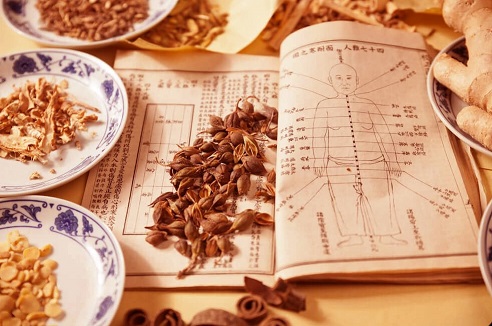DaYuan Yin, a Traditional Chinese Medicine Formulation Offers New Hope for Treating Severe Lung Disease
Nikhil Prasad Fact checked by:Thailand Medical News Team Dec 09, 2024 10 months, 1 week, 8 hours, 32 minutes ago
TCM News: A new study delved into how DaYuan Yin (DYY), a traditional Chinese medicine (TCM) formulation, can help alleviate acute lung injury (ALI), a life-threatening condition that causes severe lung inflammation and impairs oxygen exchange. This research was conducted by experts from Kunshan Hospital of Traditional Chinese Medicine and Kunshan Rehabilitation Hospital in Jiangsu, China. Using modern techniques like network pharmacology, molecular docking, and animal experiments, the study unveils how this ancient remedy might help treat one of the most challenging respiratory conditions.
 DaYuan Yin, a Traditional Chinese Medicine Formulation Offers New Hope for Treating Severe Lung Disease
DaYuan Yin, a Traditional Chinese Medicine Formulation Offers New Hope for Treating Severe Lung Disease
This
TCM News report explains the key findings, including the detailed mechanisms of how DYY works, its active components, and the potential for future clinical applications.
What is Acute Lung Injury
Acute lung injury is a critical respiratory condition characterized by severe inflammation, fluid build-up in the lungs, and a high mortality rate. Current treatments like mechanical ventilation and anti-inflammatory drugs often provide limited relief. As scientists search for new therapies, traditional medicine offers promising insights.
Acute lung injury or ALI typically results from infections, trauma, or exposure to harmful substances. It involves the release of inflammatory chemicals like TNF-α and IL-6, leading to damage in lung tissues. Moreover, oxidative stress - an imbalance between harmful reactive oxygen species (ROS) and the body's antioxidants - further worsens the condition. By addressing both inflammation and oxidative stress, new treatments like DYY could offer much-needed solutions.
The Power of DaYuan Yin
DaYuan Yin, created during China’s Qing Dynasty, combines several herbs traditionally used to treat respiratory illnesses. The remedy includes:
-Radix Paeoniae Alba (Paeonia lactiflora Pall.): Known for its anti-inflammatory effects
-Arecae Semen (Areca catechu L.): Used to reduce phlegm
-Magnolia Officinalis (Magnolia officinalis Rehd. et Wils.): Contains magnolol, a compound with anti-inflammatory properties
-Amomum tsao-ko (Amomum tsao-ko Crevost et Lemaire): Aids in clearing heat
-Anemarrhena asphodeloides (Anemarrhena asphodeloides Bunge): Known for its antioxidant properties
-Scutellaria Baicalensis (Scutellaria baicalensis Georgi): Contains wogonin, an anti-inflammatory agent
-Glycyrrhiza glabra (Glycyrrhiza uralensis Fisch.): Offers anti-inflammatory and antioxidant effects
These components work together to combat
inflammation and oxidative stress, targeting the root causes of lung injury.
Key Findings from the Study
The researchers used sophisticated techniques to identify how DYY fights ALI:
-Network Pharmacology: This approach revealed that DYY contains 95 active compounds affecting 234 therapeutic targets. Key pathways involved include PI3K-Akt and MAPK, which regulate inflammation and oxidative stress.
-Molecular Docking: The main compounds, such as quercetin, magnolol, and wogonin, showed strong binding to proteins like HO-1 and Nrf2, crucial in managing oxidative stress.
-Animal Experiments: In a rat model of ALI induced by lipopolysaccharide (LPS), DYY significantly reduced lung inflammation and oxidative damage. Notable improvements included:
-Lowering the lung wet-to-dry ratio, indicating reduced fluid accumulation
-Decreasing levels of inflammatory markers IL-6 and TNF-α in lung tissues
-Reducing oxidative stress markers like ROS and MDA
-Enhancing the expression of protective proteins like HO-1 and Nrf2, which combat oxidative damage
How DYY Works
The study highlights the role of the Nrf2/HO-1 pathway in DYY's therapeutic effects. This pathway reduces inflammation and oxidative stress by:
-Increasing antioxidant defenses
-Regulating proteins like TLR4, which are involved in the body's inflammatory response
The research also found that DYY helps maintain mitochondrial function by increasing UCP2 expression, a protein that protects against oxidative stress and inflammation.
Key Findings in Rat Models
The research team induced ALI in rats using lipopolysaccharides (LPS), a compound known to trigger lung inflammation. Rats treated with DYY showed remarkable improvements:
-Lung wet-to-dry ratios, a measure of pulmonary edema, significantly decreased.
-Histopathological analyses revealed reduced tissue damage and inflammation.
-Oxidative stress markers, including MDA and ROS, were considerably lower in the DYY-treated group.
These findings underscore DYY’s dual role in curbing inflammation and mitigating oxidative stress, two major factors in ALI progression
Conclusion
The study underscores the potential of DaYuan Yin as a treatment for acute lung injury. By targeting both inflammation and oxidative stress, DYY offers a holistic approach to managing this complex condition. However, the findings also highlight the need for further clinical trials to confirm its efficacy in humans.
DYY’s blend of natural compounds provides multi-faceted protection against lung damage, making it a valuable addition to modern medicine. As researchers continue to uncover its mechanisms, this ancient remedy could pave the way for innovative treatments for respiratory diseases.
The study findings were published in the peer-reviewed journal: Drug Design, Development and Therapy.
https://www.tandfonline.com/doi/full/10.2147/DDDT.S491521
For the latest
TCM News, keep on logging to Thailand Medical News.
Read Also:
https://www.thailandmedical.news/news/new-approach-to-combat-long-covid-with-traditional-chinese-medicine
https://www.thailandmedical.news/news/a-traditional-chinese-medicine-formula-known-as-liang-ge-san-shows-promise-in-protecting-lungs-from-viral-infections
